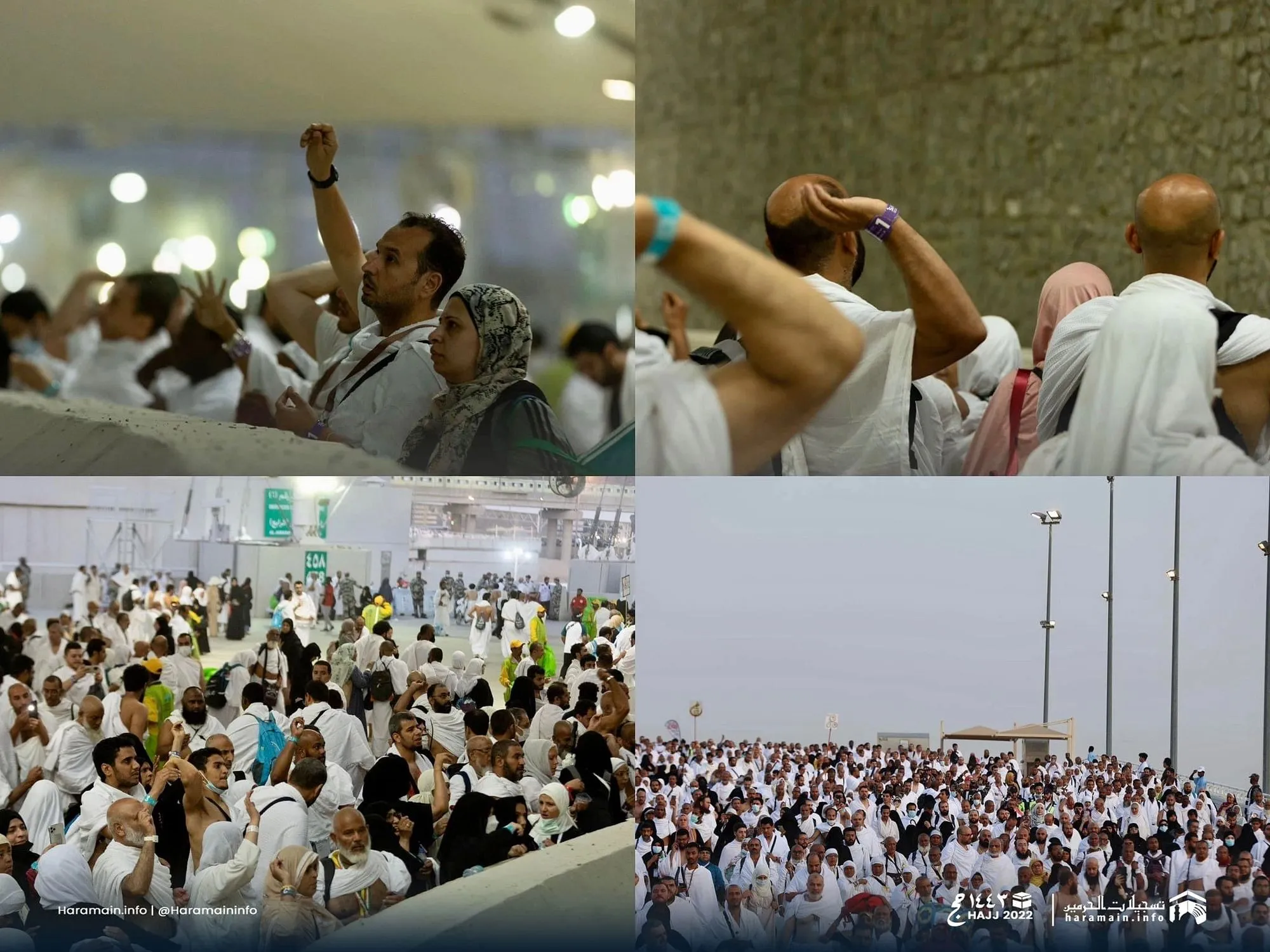Mina: Early Saturday morning, Hajj pilgrims began to move to the Grand Mosque in Makkah for Tawaf Al-Ifadha, celebrating Eid Al-Adha.
Prior to that, they had cast stones at the Jamarat, sacrificed animals, and had their heads shaved for the 10th day of Dul Hijjah, which marks Eid-ul-Adha.
The pilgrims threw seven pebbles each at the pillars of Al-Jamarah Al-Sughra, Al-Jamarah Al-Wusta and Al-Jamarah Al-Kubra in a ritual symbolizing the devil’s stoning by the Prophet Ibrahim.
Afterwards, they return to their accommodation to shave their heads, as a mark of rebirth. The sacrificing of animals represents Allah’s gesture to Ibrahim, who spared his son Ismael.
Nussarat, a Pakistani pilgrim, threw her pebbles having traveled all the way from Pakistan with her husband to perform Hajj.
“Coming to Saudi Arabia to participate in Hajj is a dream come true,” she told Arab News. “Today we celebrated Eid Al-Adha, and then we walked through Mina until we reached Jamarat Al-Aqaba, where we threw stones at the wall.
“This action was very organized, and there was no crowd of people pushing each other, and it was easier than I thought,” Nussarat added. Ezz Al-Deen, another pilgrim from Algeria, who had brought his country’s flag with him to photograph at the event, told Arab News: “It’s my first Hajj, and I decided to go with my daughter. I was surprised by how easy it was to come here and stone the devil in less than two minutes. I think it’s because this year’s pilgrimage numbers aren’t very high — the organization was really good and everyone is collaborating with us.” Adil, a pilgrim from South Africa, said that the trip from Muzdalifah to the Jamarat had an amazing atmosphere, as he had walked with pilgrims from all over the world chanting “Labbaik Allahumma Labbaik.” ( COURTESY: ARAB NEWS)






